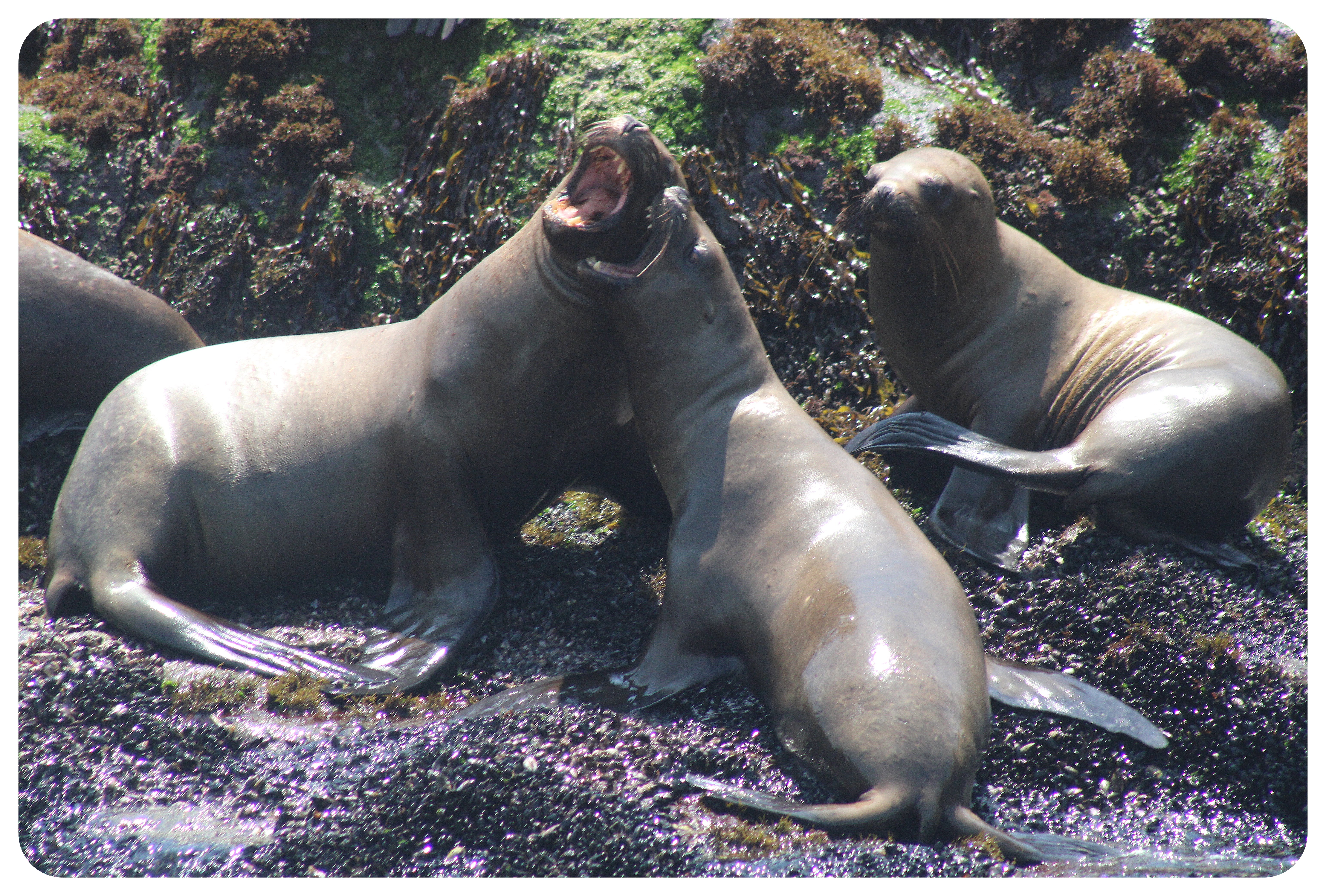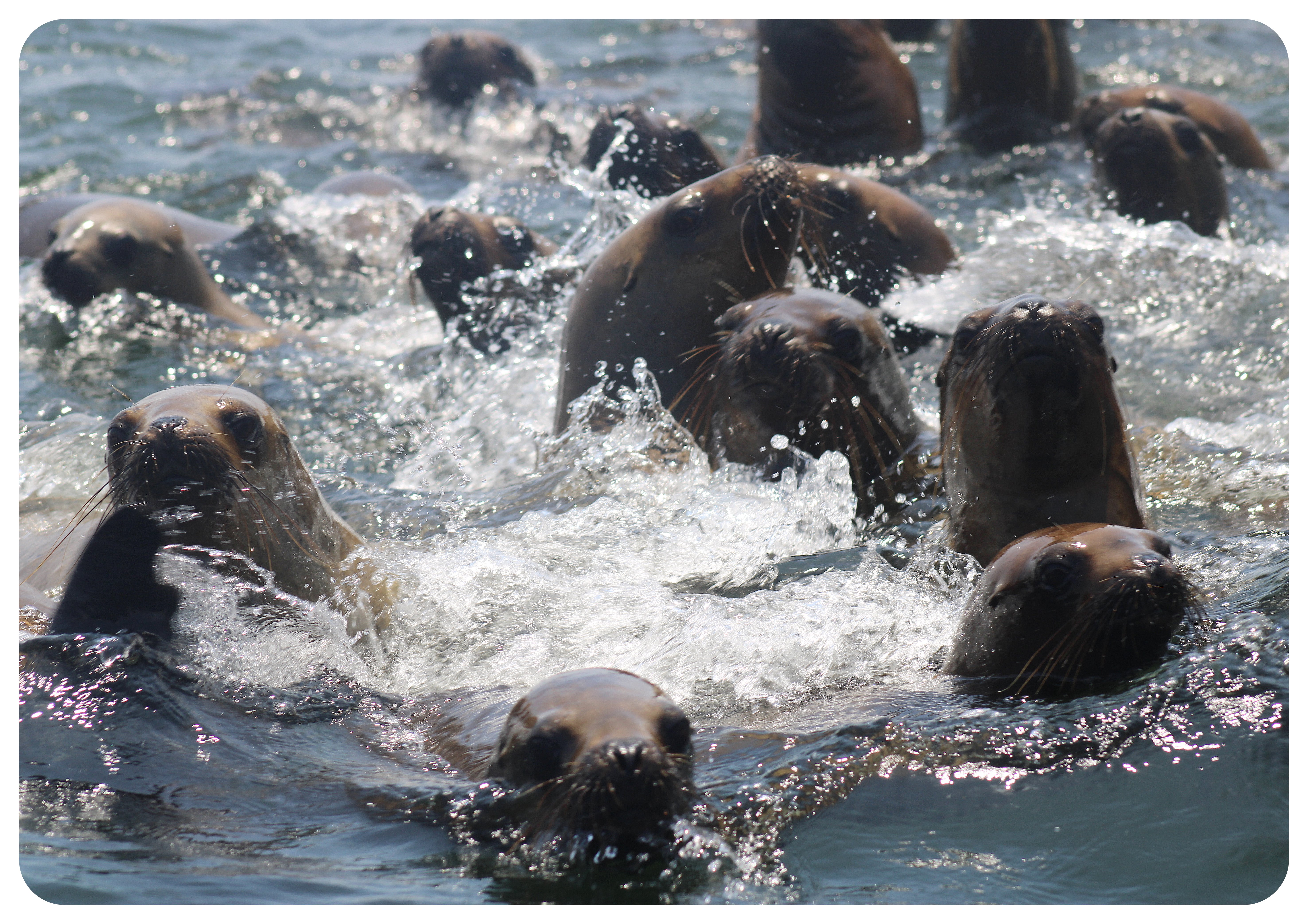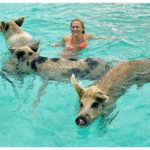Last Updated on March 2, 2025
I always thought that to see wildlife and seabirds out in the sea in Peru, I would have to visit the Ballestas Islands, often dubbed “the poor men’s Galapagos”. After having visited the real Galápagos Islands in Ecuador, I wondered though: would it be worth it for me to travel to Islas Ballestas, which weren’t really on the route through Peru that I’d mapped out for myself.
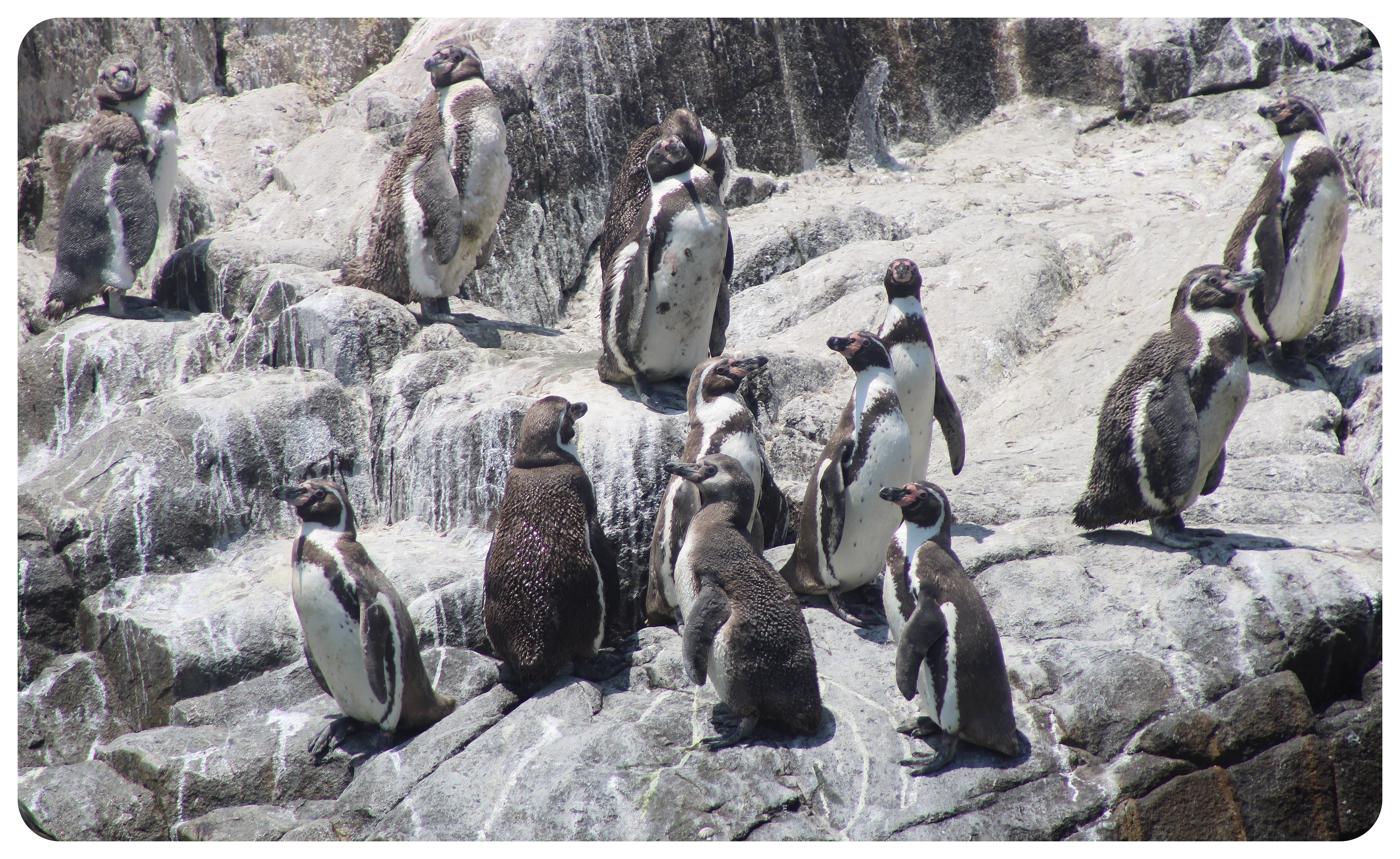
I do love watching wildlife, but how much was I willing to go out of my way for it? Ballestas Islands are known for considerable numbers of guanay guano birds, blue-footed boobies, tendrils, Humboldt Penguins and fur seals as well as sea lions. However, you can’t actually enter the islands – it’s not allowed to disembark because the islands are part of the Paracas National Reserve. While I was intrigued by the chance to see a lot of sea birds and seals, I wasn’t sure if a couple of hours on a boat would justify the detour (Paracas, from where the boat tours leave, is a 3.5 hour bus ride from Lima).
 So imagine my surprise when I saw, upon arriving in Lima, a tour advertised that promised pretty much the exact same wildlife – just right off the coast of Lima! What sealed the deal for me was the promise to swim with sea lions. I honestly had no idea what to expect when I booked the tour on a whim, but I figured that even seeing a couple of sea lions from afar would be a win.
So imagine my surprise when I saw, upon arriving in Lima, a tour advertised that promised pretty much the exact same wildlife – just right off the coast of Lima! What sealed the deal for me was the promise to swim with sea lions. I honestly had no idea what to expect when I booked the tour on a whim, but I figured that even seeing a couple of sea lions from afar would be a win.
After making the booking, I tried to find out more about this excursion, but there’s surprisingly little information online about swimming with sea lions in Lima, and my Lonely Planet guidebook did not have a single mention of it either.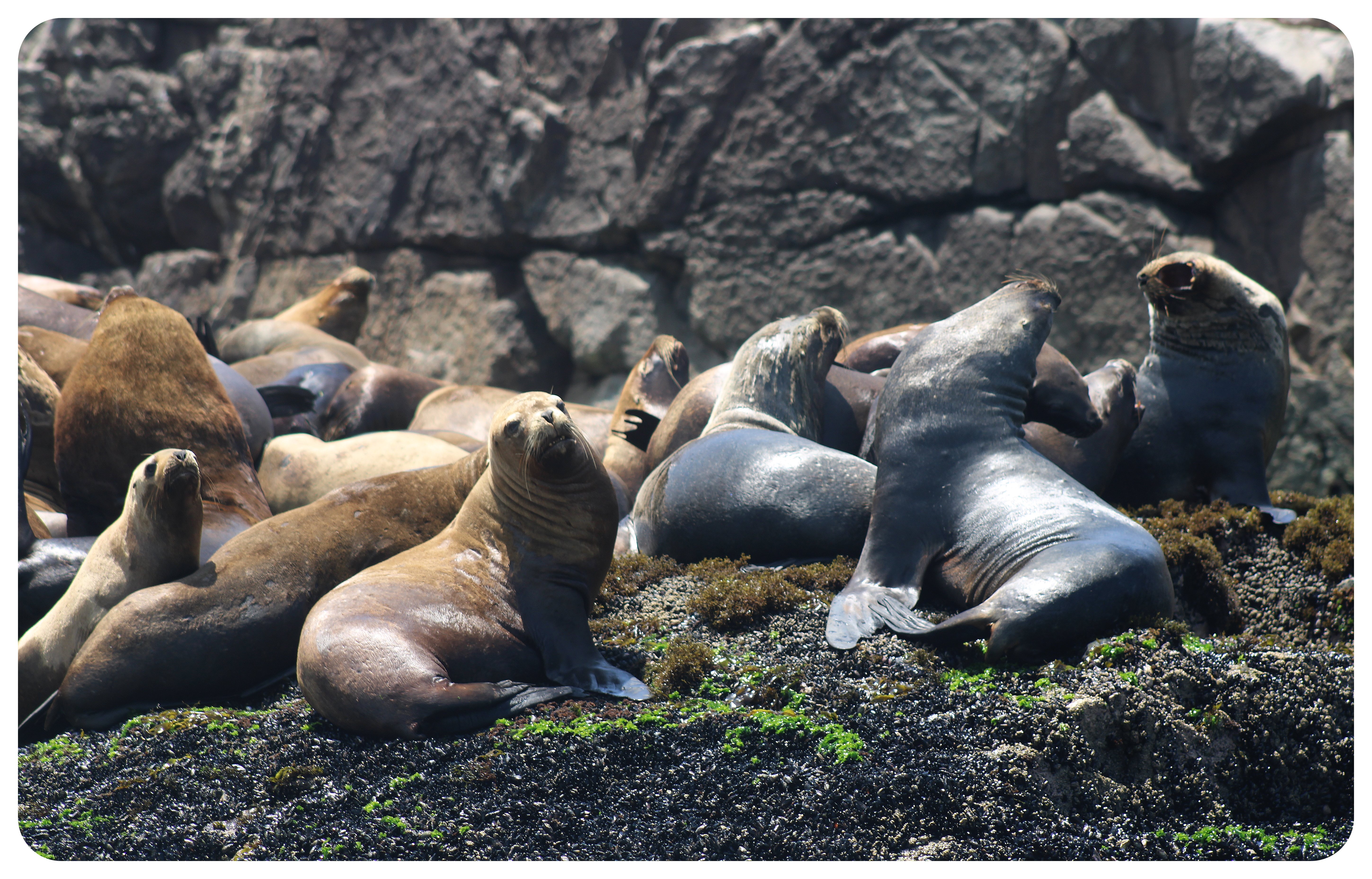
A boat trip to visit the sea lions in Palomino Island
I took an Uber to the meeting point in Callao, which my guidebook warned “travelers should approach with caution, since some areas are dangerous, even during the day”. I wasn’t sure if this warning was still accurate, but as I exited the taxi, the driver told me with a stern look “Cuidate aqui.” – Be careful here. What had I gotten myself into?
However, once I entered the restaurant, which the meeting point address turned out to be, I felt a lot more assured. There were other tourists waiting and the staff were all familiar with the excursion. I had made the booking through a Spanish-speaking tour operator, so I expected my fellow tourists to be Latin American guests. Much to my surprise though, everyone but two travelers were English speakers. We were a group of 16 people, and our guide Diego led us down to the dock near Plaza Grau, where he explained to us that we’d be seeing four islands on our tour: El Frontón Island, San Lorenzo Island, Cabinzas Island and finally Palomino Island, which is where a large colony of sea lions lives.
By the time we’d boarded the boat, it was already 10:30. The boat headed toward a large island that we could see in the distance: San Lorenzo Island. As we got closer to the island, we learned that the houses we saw there belonged to a naval base, and part of the navy training here was to swim from the island back to the Peruvian Naval School on the main land. This is a 3-mile (about 5km) swim that takes most aspiring sailors between 2 and 4 hours.
Right across from San Lorenzo Island, there’s a smaller rock, which is called El Frontón and used to be a maximum security prison. Basically Lima’s version of Alcatraz. The prison was closed after an uprising in 1986, during which almost all of the prisoners were killed, and today, the only ones who set foot on the island are sea lions and Humboldt Penguins.
We didn’t see any penguins though until we got to Cabinza Island, which is also inhabited by guano cormorants. As the name indicates, these birds are a main producer of guano – which is a nicer word for bird shit. We saw that most of the island as well as single rocks jutting out of the water were covered in a thick layer of guano and learned that the seabird guano trade used to play a significant role in Peru’s economy, because guano is a natural fertilizer. The word guano originates from the Quechua language, in which it means dung, and Quechua people have used guano for thousands of years – reaching back all the way to the kingdom of Machu Picchu. Entire shiploads of guano were shipped to Europe from Peru in the 19th century, but the guano trade eventually declined after the invention of synthetic fertilizers.
The word guano originates from the Quechua language, in which it means dung, and Quechua people have used guano for thousands of years – reaching back all the way to the kingdom of Machu Picchu. Entire shiploads of guano were shipped to Europe from Peru in the 19th century, but the guano trade eventually declined after the invention of synthetic fertilizers.
These days, guano just covers pretty much every inch of the surface of the islands and rocks in this area, instead of being collected. And that means: it smells. Apparently, the longer guano sits, the stronger it smells, and the guano here must have been sitting on the rocks for quite a while. To think that people were forced to work on these islands (initially, slaves were used for guano mining) is horrific.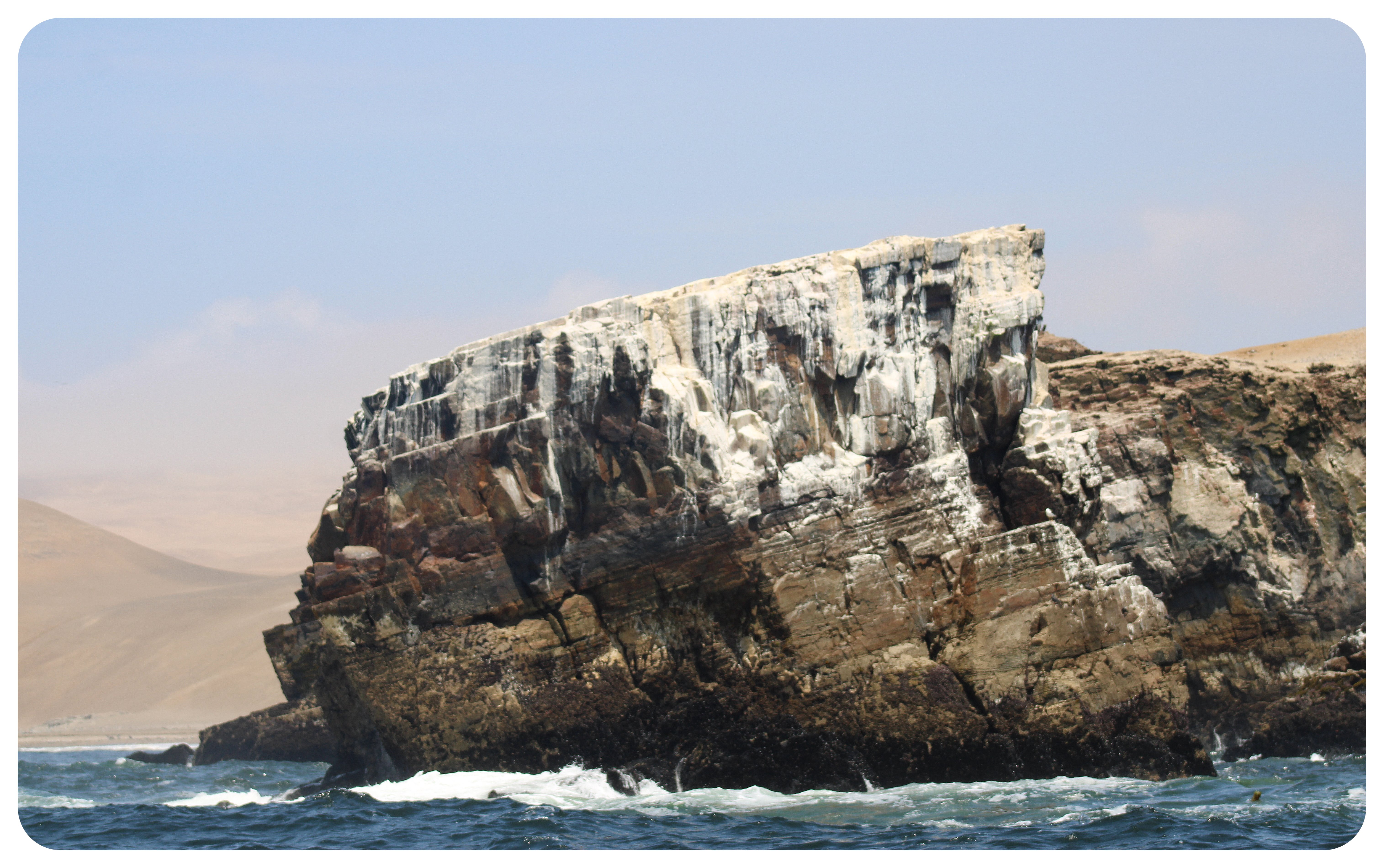
As we approached Palomino Island, we spotted more Humboldt Penguins and other birds, and then, finally, the main attraction of this trip: the sea lions. It turns out that Palomino Island is home to a huge sea lion colony: between 8,000 – 10,000 sea lions live here! As we drove by the island in the boat, we saw thousands of sea lions lounging in the sun, and every single rock had sea lions on it.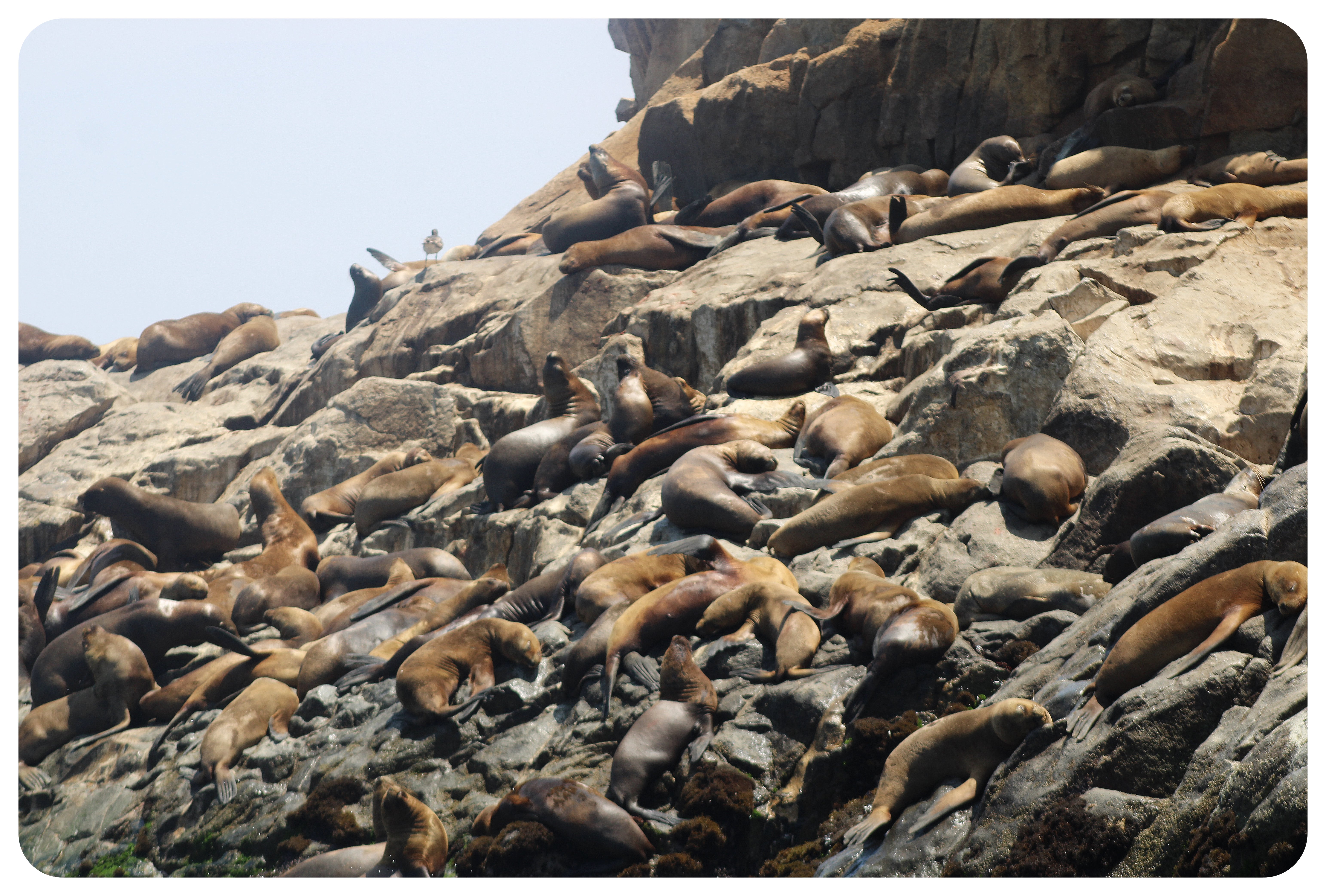 The ones that were in the water started following our boat, loudly barking and squealing as they swam behind us. And then it was time for us to get in the water. I’m not gonna lie: as our boat was surrounded by hundreds of sea lions, the thought of getting in the ocean was quite terrifying. But I figured that our guide wouldn’t let us swim with sea lions if it’d put us in danger 😉
The ones that were in the water started following our boat, loudly barking and squealing as they swam behind us. And then it was time for us to get in the water. I’m not gonna lie: as our boat was surrounded by hundreds of sea lions, the thought of getting in the ocean was quite terrifying. But I figured that our guide wouldn’t let us swim with sea lions if it’d put us in danger 😉
I thought I’d be fine jumping in the water with just my bikini on, but when everyone else grabbed a wetsuit from a big pile, I decided to wear one, too. The tour operators usually provide both wetsuits and life vests – the latter have to be worn in the water. Once all of us were ready to go, one after the other jumped off the boat, and initially, the water felt shockingly cold. However, the excitement about being in the water with the sea lions had me forget about the cold weather quickly. It also made me forget the stench that had been impossible to ignore ever since we got close to Palomino Island. Who knew that sea lions were such smelly creatures! It was noon by the time everyone was in the water, and we followed Diego who swam closer to the sea lions. He told us to lay on our backs and let them see our feet, so that’s what we did. We still kept a safe distance to the sea lions and were told that even if they approached us, not to touch them.
It was noon by the time everyone was in the water, and we followed Diego who swam closer to the sea lions. He told us to lay on our backs and let them see our feet, so that’s what we did. We still kept a safe distance to the sea lions and were told that even if they approached us, not to touch them.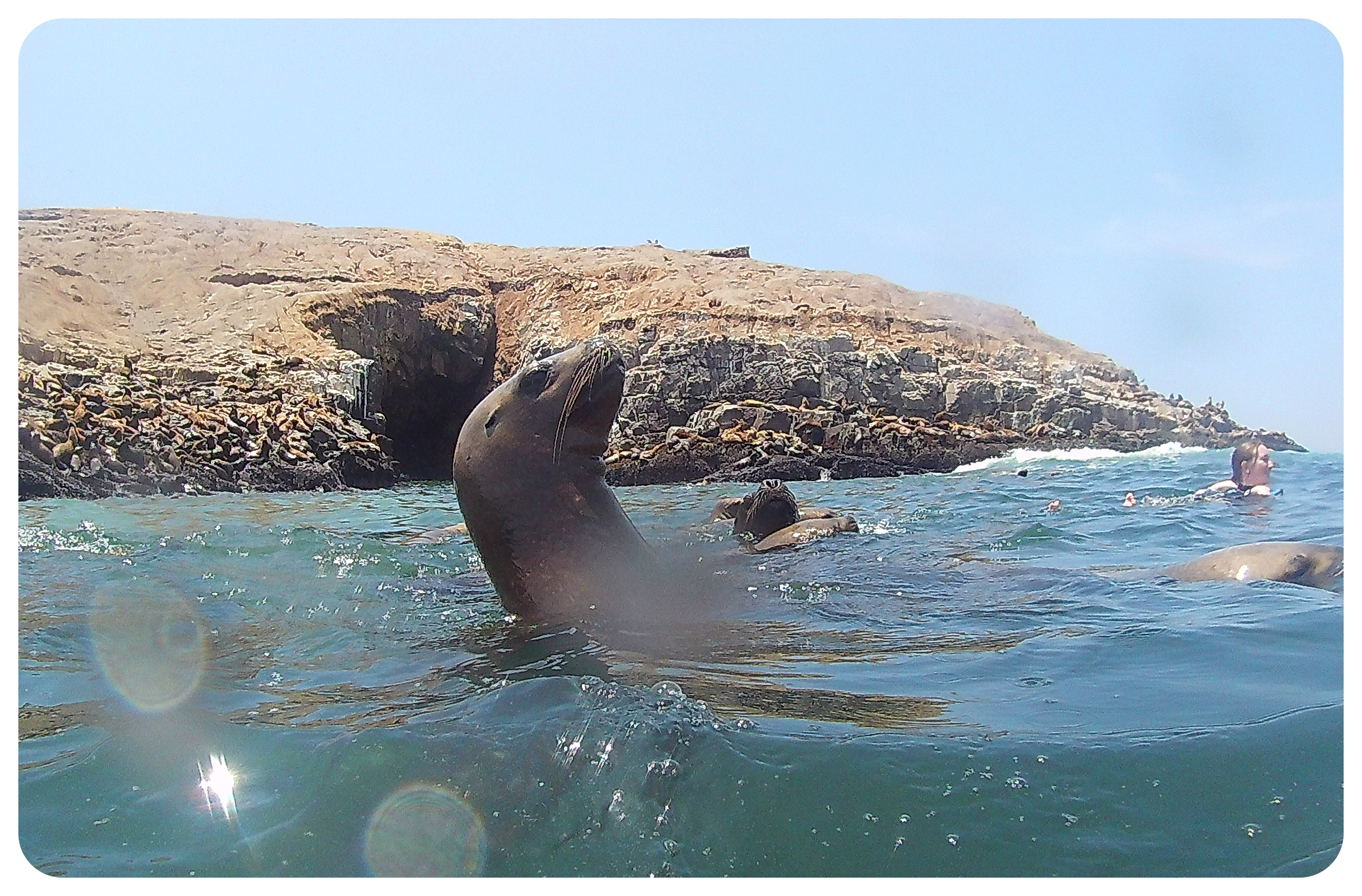
We watched them play and dive and swim around us and it was an incredible experience to be so close to the sea lions. I didn’t feel unsafe at any time, and I also didn’t feel like they were bothered by our presence.
We were told that we’d have 15 minutes to swim with the sea lions, but our guide Diego was very generous: not only did he give us extra time, but he also took another guest’s and my underwater camera to get some really good close-up footage of the sea lions and of us in the water with them. As we were frolicking in the waves, I noticed a lot of little particles floating around us and asked what they were – and my suspicion that it was sea lion poop was confirmed. Just make sure to take a shower after this experience!
By 12.30, everyone was back on the boat and we made our way back to the dock. Everyone was in great spirits after this unique animal encounter. I definitely was happy about my decision to skip the Ballestas Islands and swim with sea lions in Lima instead.
Sea lions in Lima vs sea lions in Ballestas Islands
If you’re not sure if you want to go all the way to the Ballestas Islands, I’ve made a list of the main benefits of swimming with sea lions in Palomino Island over visiting the Ballestas Islands:
The sea lions in Lima are easier to get to
That was the primary reason for me to book this trip, because it’d save me the four hour trip to Paracas, from where the boat tours to the Ballestas Islands leave. If you don’t have time to head to Paracas, this is a great alternative.
If you have a day to spare, there is the option to take a day trip from Lima to Paracas, which does not include the Ballestas Islands tour, but also a visit to the desert oasis of Huacachina. However, be aware that these tours are VERY long, because it takes just under five hours to get to Paracas, and the way back to Lima from Huacachina is over five hours. You’ll be spending well over 10 hours on a bus! In the reviews I’ve read, many travelers complained that this trip is too long (16 – 17 hours!). You can check it out here (and read some recent reviews):
- From Lima: Full-Day Paracas and Huacachina Bus Tour– from US$135
- From Lima: Paracas, Ica, and Huacachina Day Tour – from US$64
You can actually swim with sea lions!
Another big difference is that you can actually swim with sea lions in Lima, while the Ballestas Islands Tour is just a boat trip without the possibility to disembark during the 2-hour trip.
In terms of the wildlife we saw, I don’t think the Ballestas Islands have any species that you wouldn’t find on these four islands off the coast of Lima.
Size of the tour group
I’ve read that the groups are much larger in the Ballestas Islands, since they’re much more popular. Our boat was at full capacity with 16 people, but boats in the Ballestas Islands pack 35 – 50 people!
How to swim with sea lions in Palomino Island, Lima
There are a number of tour operators who run sea lion tours to Islas Palomino, and you can book directly via their websites if you speak Spanish, or if you prefer booking the tour via an English-speaking website, they all list their tours on Getyourguide (at a higher price).
Palomino Islands: Swim with Sea Lions in the Pacific Ocean (US$59, 3 hours. Hotel pick-up and drop-off not included – tour starts at the dock in Callao.) Tour Operator: Eco Cruceros
Swimming with Sea Lions Palomino Islands Boat Tour (US$76, 3 hours. Hotel pick-up and drop-off are NOT included) Tour Operator: Mar Adentro
Palomino Islands Speedboat Tour & Swim with Sea Lions (US$120, 4.5 hours, including hotel pick-up and drop-off) Tour Operator: Vista Adventures
Book with the tour operators directly:
Mar Adentro Excursiones – US$56, hotel pick-up not included.
Vista Adventures – US$95 including hotel drop-off and pick-up.
Eco Cruceros – US$59 – tour starts at the dock. US$5 Tax to the Environment Ministry (SERNANP) and boarding fee not included. Website in English
My personal recommendation: Mar Adentro Excursions
I went with Mar Adentro Excursions (US$56) and our guide Diego was great. He spoke good English and had a lot of information about the sealife of the area and interesting tidbits about all of the islands we passed on the tour. He also took good care of everyone as we got in and out of the water, helped us with the wetsuits, etc.
You can also book this tour on Airbnb Experiences:
Sealions and Palomino Islands in Lima, Peru (US$54, 3 hours)

What to bring on your excursion to Palomino Island
I recommend wearing your bathing suit underneath your clothes, because there’s not really anywhere to change into a bathing suit, neither on the boat nor at the restaurant we met at.
I also recommend having a hearty breakfast before the tour, because you won’t be back on land until 1.30pm, and unless you have lunch at the meeting point (Restaurant El Nakary), it’ll be a while before you can sit down for lunch somewhere. We only got a small bag of chips and a fruit juice as a snack, plus a bottle of water. You could have something to eat at the restaurant before the tour starts, if you arrive early enough.
- Waterproof case for your smartphone, if you’re brave enough to take it in the water with you. If you don’t have one, don’t worry – there are a couple of vendors near the dock who sell them. I can’t vouch for the quality of them, however.
- Portable battery – trust me, you’ll take loads of photos and videos once you get to Palomino Island. If your phone battery life isn’t great, pack a portable charger.
- Sunblock – the sun is much hotter than you think, even if it’s a bit overcast. A lot of people underestimate the burning sun, and there’s no hiding from it.
- Vizor / sun hat – as mentioned above, the sun is relentless, and there is no shade on the boat whatsoever.
- Travel towel – If you go in the water, I recommend packing a towel. I use this quick-drying travel towel.
- Seasickness pills – if you easily get sick on boats, take a seasickness pill. The ocean was definitely choppy, and we had some huge waves!
- Binoculars – if you have them, bring them! You’ll be able to get a much better view of the penguins and other sea birds.
